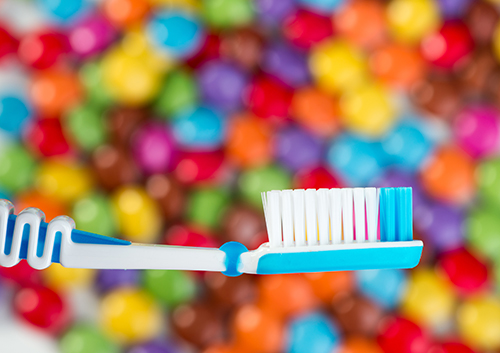Aging and Dental Health
September 30th, 2020

What’s life like for the average 60-year-old today? It’s complicated! We travel. Or we work out. Or we relax with friends. We pursue favorite hobbies or we develop new ones. We work, or start businesses, or volunteer for schools, museums, and charities. We practice the art of writing letters or we text our grandchildren. Whatever else we do, we do our best to stay healthy so we can live our lives to the fullest.
Part of living our lives to the fullest means caring for ourselves. And caring for ourselves means learning how to look out for the potential dental problems that might come with age, and how to keep ourselves in the best of dental health.
- Gum Disease
Gum disease, or periodontitis, is not uncommon in older patients. Certain medical conditions, such as diabetes, can leave you more vulnerable to gum disease. Because gum disease is often symptom free, it can remain unnoticed until the disease has progressed. Good oral hygiene and regular visits to the dentist are the best means of prevention—we are trained to discover gum disease in its earliest stages, and can treat it before the disease causes serious damage to gums, teeth and bone. But if you have delayed seeing a dentist, the good news is that there are many methods of treating gum disease available, including antibiotics, professional plaque removal, and periodontal surgery.
- Tooth Decay
As we age, our gums can recede from the teeth. The new root area that is exposed is more vulnerable to decay because it is not shielded by the hard enamel which protects the upper part, or crown, of the tooth. Maintaining your brushing and flossing routine is the best way to keep cavities from developing. If gum recession is severe, there are surgical methods we can discuss to restore gum health.
- Time
Cosmetically, teeth can yellow with age as the dentin beneath the enamel darkens and the enamel covering it thins. Years of coffee, wine, smoking and other stain-makers take their toll. If you are self-conscious about the appearance of your smile, talk to us about suggestions for whitening and brightening.
Medically, over time our teeth are subject to damage. Enamel and tooth surfaces can wear away, leaving our teeth more at risk for breaks or fractures that can lead to infection, which can result in the need for root canal work. Simple chewing puts an amazing amount of pressure on the teeth—and if you grind your teeth, there is even more stress placed on them. See us regularly for ways to maintain strong teeth, to repair damage if necessary, and to keep your gums and bones healthy if you are a denture wearer.
- Dry Mouth
Dry mouth can be a problem for older patients, often caused by medical conditions or medications. When we produce saliva, it helps remove sugar and the acids sugars produce which attack our enamel. Without normal saliva production, we are more vulnerable to cavities. Dry mouth can also lead to mouth ulcers, oral thrush, sores and infections. If you have been suffering from this condition, talk to us. Dr. Werner and our team have suggestions that will help.
- Oral Cancer
Oral cancer is something we look for during every check-up. And, if you ever notice any change that causes you concern, call us immediately. Early treatment of oral cancer and other oral diseases leads to the best possible outcome.
- Keep Up With Your Dental Care
The best way to keep our teeth and mouths healthy as we age is with prevention. Regular daily brushing and flossing and office visits twice a year for an examination and a professional cleaning are habits that should last a lifetime. Make sure to tell us about any medical conditions you may have and any medications you are taking, to avoid interactions and relieve unpleasant side effects.
What’s life like for the average older person today? There is no average older person! As we age, we are free to explore our interests in any number of creative and individual ways. But there is one goal we have in common: we all want to keep our smiles healthy and attractive. Call our Los Gatos, CA office for preventative and restorative care. We want to help you work toward an ageless smile!




 Website Powered by Sesame 24-7™
Website Powered by Sesame 24-7™